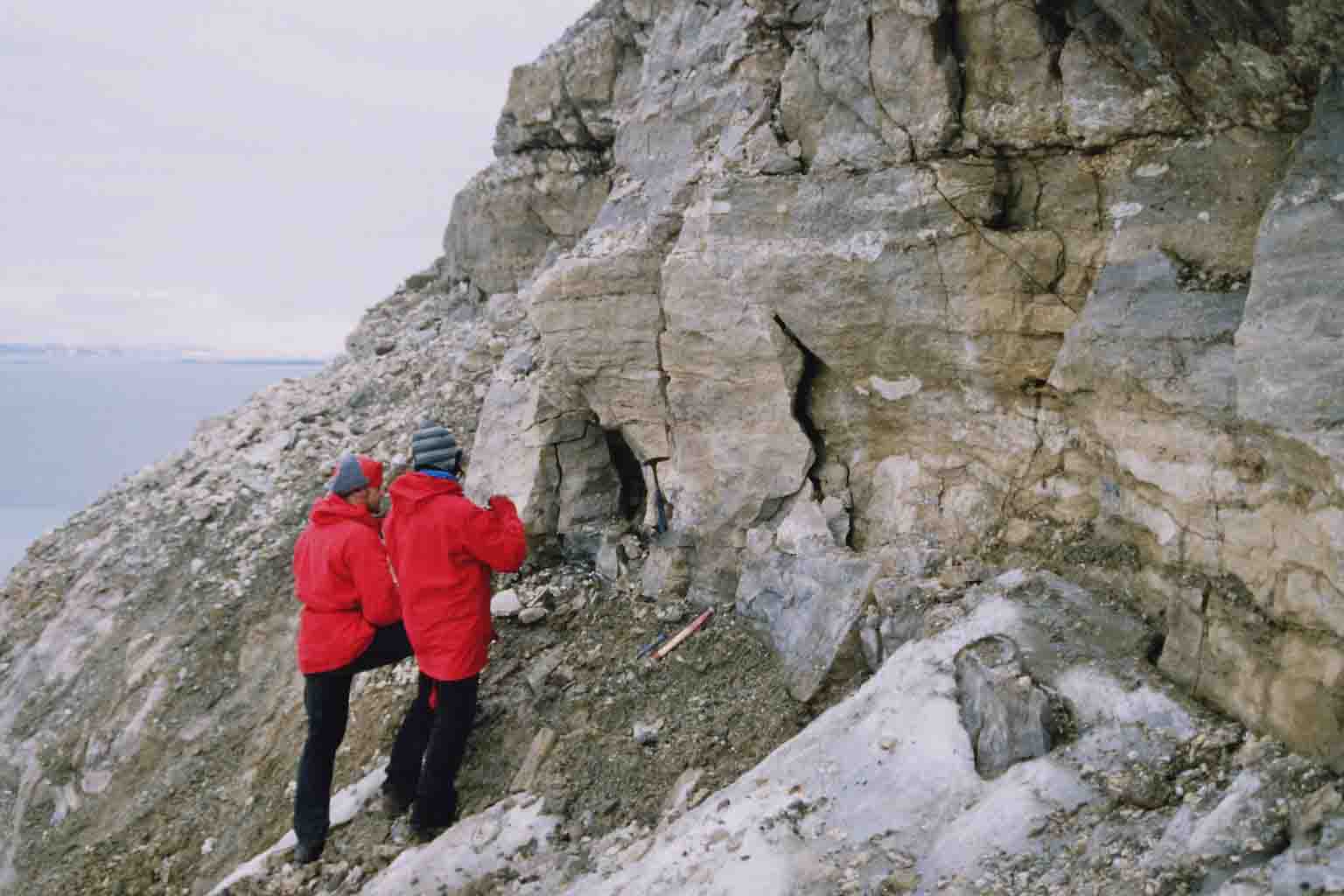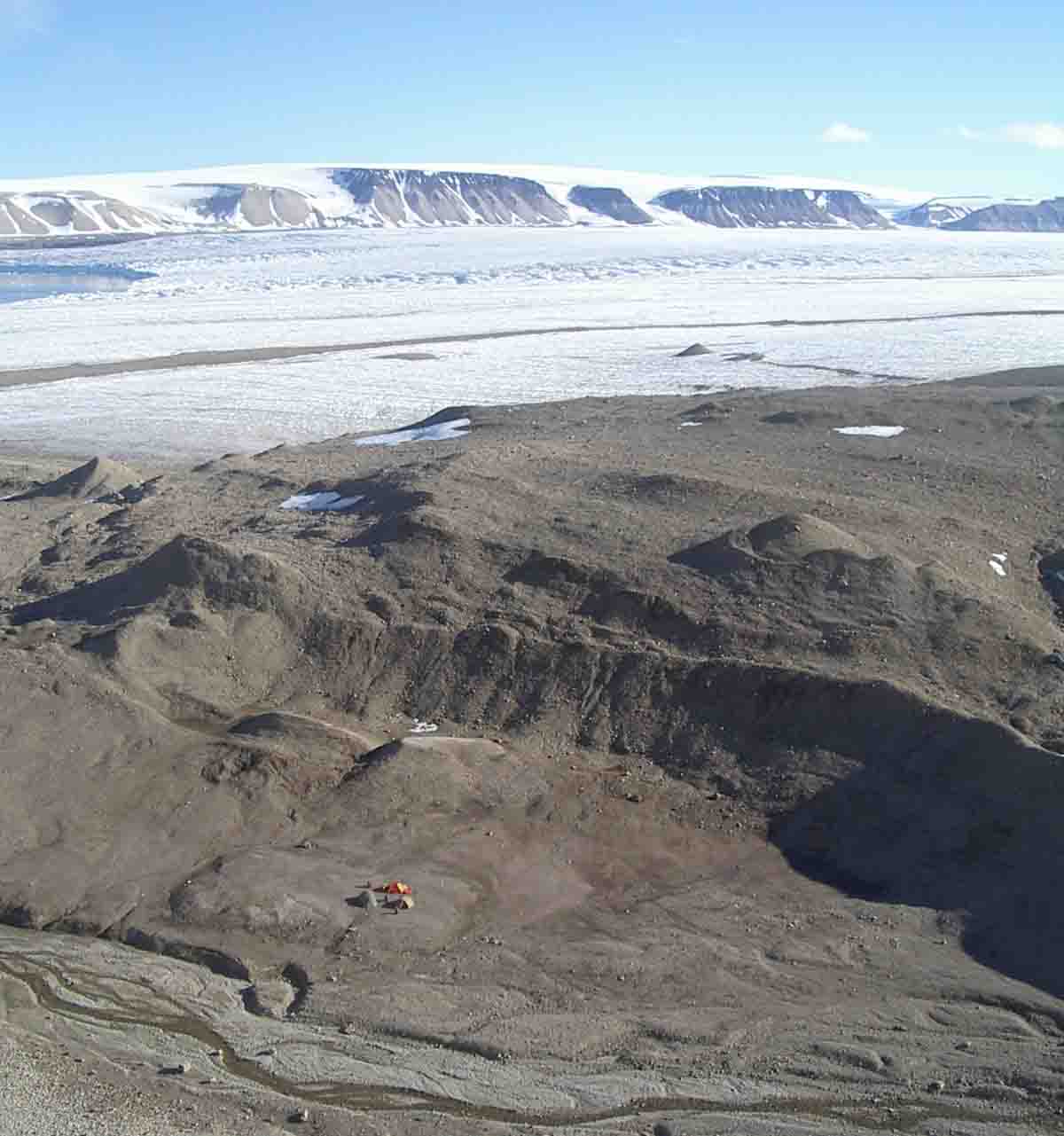

|
Geological fieldwork in Northeastern Svalbard: Carboniferous and Permian stratigraphyIntroductionThe project The fieldwork on Svalbard was conducted within the scope of the on-going projects in cooperation with the Norwegian Polar Institute "Late Palaeozoic sedimentology and stratigraphy of NE-Svalbard" and "Cyclicity of a Permian cold-water platform (NE Svalbard)", part of the geological mapping program on Svalbard (GEOKART). The general aims are to investigate Carboniferous/Permian strata with reg  ards to sedimentology and
palaeoecology. This is done in order to reconstruct the depositional environment and
to interpret sea level and climatic changes throughout the
Carboniferous and Permian. Field work conducted during 2004 and
2005 was geared mainly toward Carboniferous strata; the most recent
field work conducted during August 2006
concentrated on Permian strata. Future field work expanding on
this is also planned for 2007. ards to sedimentology and
palaeoecology. This is done in order to reconstruct the depositional environment and
to interpret sea level and climatic changes throughout the
Carboniferous and Permian. Field work conducted during 2004 and
2005 was geared mainly toward Carboniferous strata; the most recent
field work conducted during August 2006
concentrated on Permian strata. Future field work expanding on
this is also planned for 2007.The main goals of this cooperative project are:
Svalbard is unique geologically in that a complete, practically gap-free succession of rocks can be found on the archipelago from the Pre-Cambrian all the way up to the Tertiary (Geological time scale). This is a great portion of the Earth's history. In most other areas of the world, the rock record is not nearly as continuous, and only represents a much shorter segment of geological history. But because of Svalbard's remote location and extensive ice cover, less is known about the geology of Svalbard, particularly in the Northeastern region, than in more accessible areas. Svalbard is thus a key research area, as there is still plenty to be explored. The lack of significant vegetation (with no trees, and only 10 % total vegetation in the region) and well-exposed, relatively undisturbed sedimentary deposits additionally make the Northeastern region of Svalbard a good area for Carboniferous/Permian sedimentology. The content in the following pages outlines some basic geographical, historical and geologic information about Svalbard for general interest, in addition to information on the field work conducted in August 2006 and the further aims of the project. |
||||||||||








